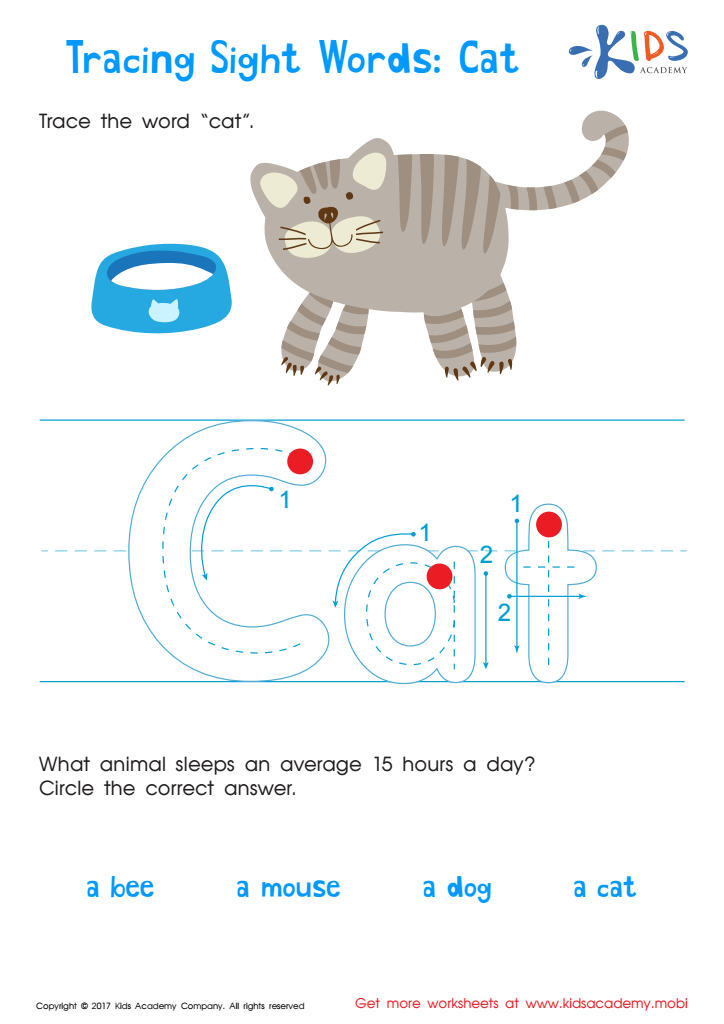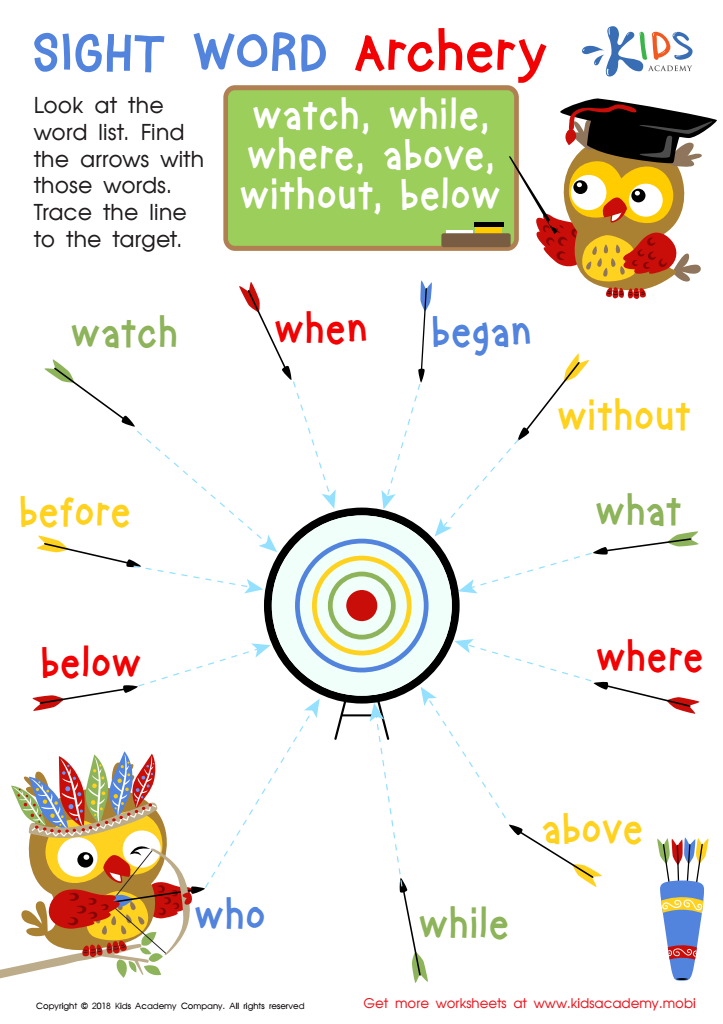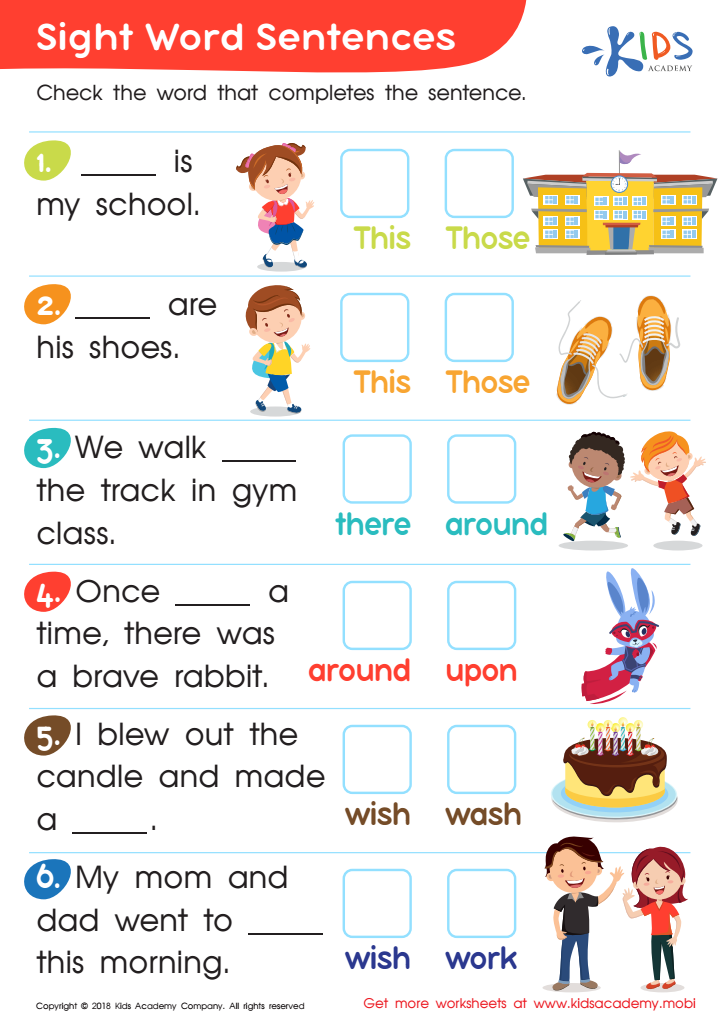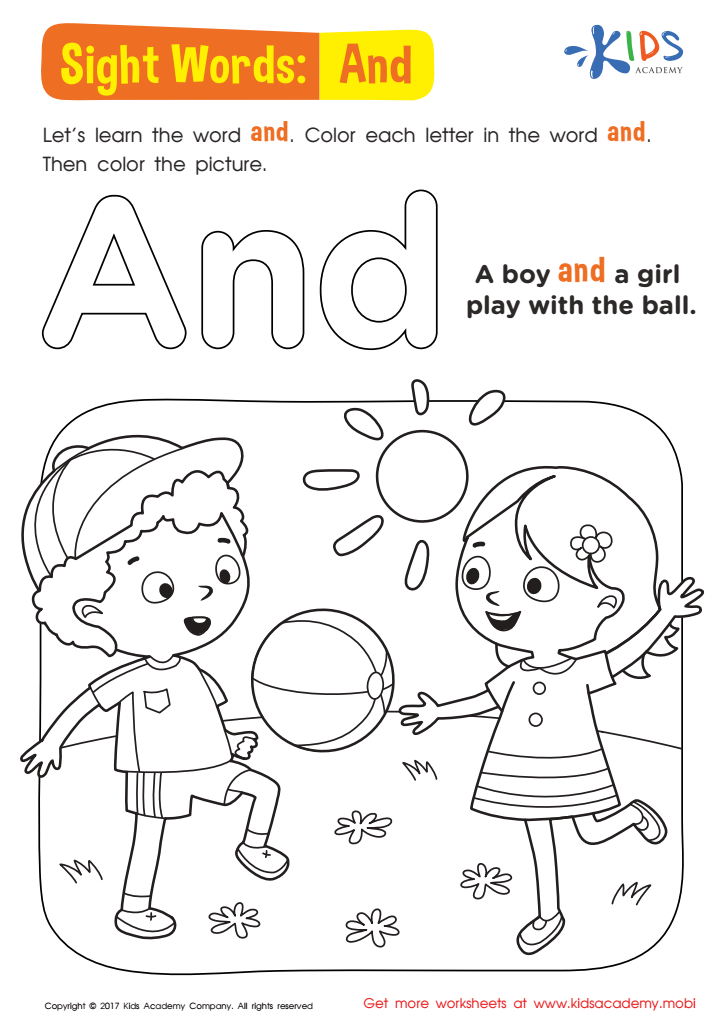Sight word recognition Phonics Worksheets for Ages 5-9
5 filtered results
-
From - To
Discover the perfect resources to bolster your child's reading skills with our Sight Word Recognition Phonics Worksheets designed for ages 5-9. These activities blend engaging exercises with educational rigor, promoting instant recognition of essential words. Creatively crafted to captivate young learners, our worksheets help build foundational literacy skills, improve fluency, and boost reading confidence. Whether your child is a beginner or advancing their skills, our collection supports various proficiency levels with an array of visually appealing and interactive tasks. Empower your child's reading journey and watch their abilities flourish effortlessly with our expertly designed phonics worksheets.


Cat Printable Sight Words Worksheet


Sight Word Archery Worksheet


Dog Worksheet Sight Words Worksheet


Sight Word Sentences Worksheet


And Worksheet Sight Words Worksheet
Sight word recognition is fundamental in teaching children aged 5-9 to read fluently. Sight words are high-frequency words that often don’t follow usual phonics rules and appear frequently in texts children encounter, such as "the," "and," "said," and "was." When children can recognize these words on sight, they can read more quickly and with better comprehension, as they don’t have to stop and decode every single word.
Phonics, on the other hand, is the method of teaching children to read by correlating sounds with letters or groups of letters. Mastery of phonics helps children sound out unfamiliar words, expanding their reading capabilities.
Parents and teachers should prioritize both sight word recognition and phonics because they work in tandem to develop proficient, confident readers. When children can swiftly read sight words and apply phonics to decode new words, they grasp stories and content better, enjoy reading more, and build a strong foundation for future learning across all subjects.
Addressing sight word recognition and phonics together sets children up for success, not just academically but also cultivates a lifelong love for reading, critical thinking skills, and the ability to learn independently. This dual approach lays inclusive groundwork, ensuring no child falls behind in literacy development.

 Assign to My Students
Assign to My Students




















